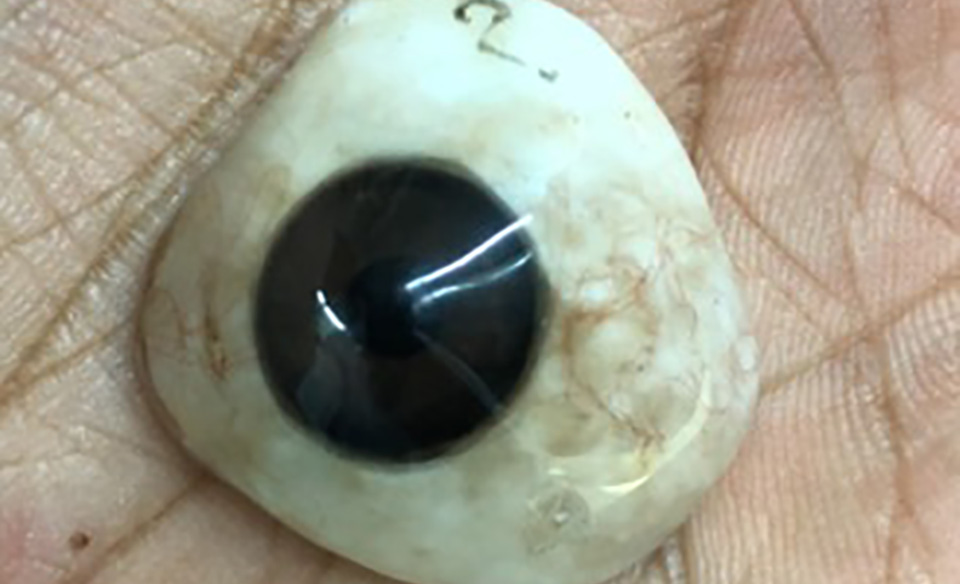- OT
- Life in practice
- Practitioner stories
- Eye care experiences in India
Eye care experiences in India
Second year optometry undergraduate at City, University of London, Aaron Uraon, shares insight into a two-week work placement at an eye clinic in India

Aaron Uraon
17 April 2019
As a second-year student studying optometry at university, I am always looking for opportunities to increase the breadth and depth of my knowledge and experience of the sector. That is why when I was sitting in a lecture and received an email about travelling to Hyderabad in India to participate in a two-week observational placement at LV Prasad Eye Institute (LVPEI) I knew I had to apply.
After submitting a short but detailed application, I was elated to hear that I had been selected for the placement and that I should to be prepared to travel to Hyderabad six weeks later. Due to the relatively compressed period between being selected and leaving, I didn’t have much time to ponder my expectations or experiences of what was to come. However, I don’t think any scope of my imagination could have prepared me for the incredible pathology that I witnessed.
The placement
On my arrival, shared accommodation had been arranged within the residence that occupied the middle floor of the hospital, which made the early starts much more manageable. I spent my time rotating through a number of different specialities and outpatient departments during a six-day working week.
I was able to observe a mix of routine and complex surgeries, prosthetic labs and diagnostic screening, as well as sit in on numerous consultations.
I found my time in the low vision department most informative because the pathology behind the extremely poor visual acuity that patients presented with was particularly interesting.
What amazed me the most was how the low vision department worked closely with physiotherapists, occupational therapists and counsellors. This multi-disciplinary team approach towards patient care demonstrated that there was a great awareness of how visual-related issues affected other aspects of living.
LVPEI works closely with a number of employers to provide patients with job placements they are capable of pursuing in order to provide an income and support their families.
I don’t think any scope of my imagination could have prepared me for the incredible pathology I was able to witness
Making memories
The most poignant moment during the trip came on my last day when I observed a prosthetic contact lens appointment for an eight-year-old child with the 38th known case of GAPO syndrome in 71 years. The condition had resulted in his left eye being completely scarred and white, with no visible iris. The sheer joy on the face of the young child and his father once the contact lens had been fitted was immense, and the child couldn’t stop staring at his own reflection in the mirror and smiling.
Another area of the hospital that drew my attention was the innovation centre, where 100 engineering students had teamed up with a panel of optometrists to help tackle problems within the field of optometry. The prototypes and models that had been created to screen for ocular conditions within the villages and more distant communities were fascinating.

Pyramid processes
LVPEI operates on a pyramid-based structure, which is extremely effective in allowing the largest number of individuals to be reached. This is especially important in a country like India – its dense population makes it difficult to reach patients in the community and villages outside of the main cities.
The base of the pyramid consists of vision guardians, who identify individuals who are at risk within the communities that they are based through door-to-door surveys, referring for treatment when required.
Vision centres are run within the villages by vision technicians, many of whom were once patients of LVPEI and have enrolled and completed a one-year training course. They carry out simple refractive techniques and dispense a prescription if required. They are also trained use slit lamps to assess ocular health.
Secondary and tertiary care centres are present in the community to provide a comprehensive range of services, including routine surgeries for conditions such as cataracts. I was lucky enough to be based at the LVPEI in Hyderabad, at the centre of excellence, which occupies the apex of the pyramid. Complex cases from the centres in the community are referred there for specialists to treat.
The hospital operates on a moral ethic by which it provides eye care for all, irrespective of affordability or complexity. Patients are categorised as: paying, supporters, sight-savers and non-paying. The standard of treatment they receive is exactly the same, with the only difference being the amount they pay, which correlates to their waiting time.
During my trip I wrote daily reflections based on consultations I observed, which can be read online. This opportunity has opened my eyes and enabled me to see a vast amount of pathology. It is an experience that has given me lifelong memories, has reinforced my passion for this field and increased my thirst to learn more.
Acknowledgements
I would like to thank the Hospital Saturday Fund for giving me this opportunity and the LV Prasad Eye Institute for it excellent hospitality.
Advertisement

Comments (0)
You must be logged in to join the discussion. Log in